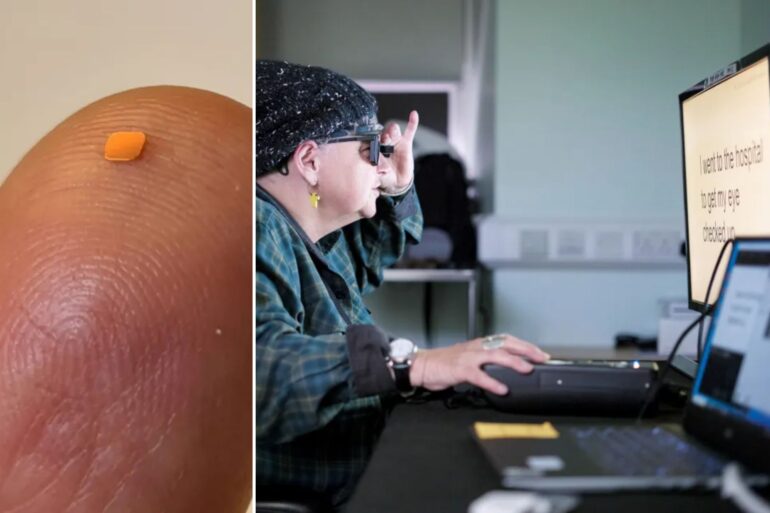🔴 Website 👉 https://u-s-news.com/
Telegram 👉 https://t.me/usnewscom_channel
Finally, there’s a new vision for addressing this common eye condition.
Dry age-related macular degeneration slowly damages the macula, the part of the retina responsible for central vision.
Geographic atrophy is an advanced and irreversible form of AMD that affects about a million Americans.
Treatments have focused on slowing its progression but haven’t restored lost vision — until now.
Several patients in a revolutionary clinical trial regained their ability to read when they received an electronic eye implant that’s paired with augmented reality glasses.
“In the history of artificial vision, this represents a new era,” Mahi Muqit, an associate professor in the University College London Institute of Ophthalmology who led the UK arm of the trial, said in a statement.
“Blind patients are actually able to have meaningful central vision restoration, which has never been done before,” he added.
Credit the photovoltaic retina implant microarray (PRIMA) system, which features a wireless, ultra-thin microchip that contains 378 photovoltaic cells to replace the function of the rod and cone cells damaged by AMD.
A surgeon implants the chip under the macula in a procedure that lasts less than two hours.
It takes about a month for the eye to settle and the new chip to be activated.
The patient is then given a handheld computer and AR glasses with a mini-camera and an infrared projector.
The camera captures the person’s surroundings. The visual data is sent to the pocket computer, which translates it into an infrared light pattern.
The projector beams this pattern to the chip, where it’s converted into electrical current that stimulates the remaining, healthy neurons of the retina.
The brain interprets the new electrical patterns as visual information.
Patients spend several months working with these signals so they can start reading again.
The European trial involved 38 patients who had lost central sight in at least one eye. They had limited peripheral vision.
In the end, 84% of participants were able to read letters, numbers and words — even five lines of a vision chart — thanks to PRIMA.
“Before receiving the implant, it was like having two black discs in my eyes, with the outside distorted,” said Sheila Irvine, one of the participants at Moorfields Eye Hospital in London.
“There was no pain during the operation, but you’re still aware of what’s happening,” Irvine added. “It’s a new way of looking through your eyes, and it was dead exciting when I began seeing a letter.”
Once an avid bookworm, Irvine said she has been able to read tiny writing on labels and complete crosswords.
One of the French patients used their newfound sight to navigate the Paris metro system.
The findings, published Monday in the New England Journal of Medicine, give new hope to AMD sufferers.
“These are elderly patients who were no longer able to read, write or recognize faces due to lost vision. They couldn’t even see the vision chart before,” said Muqit, a senior vitreoretinal consultant at Moorfields Eye Hospital.
“They’ve gone from being in darkness to being able to start using their vision again, and studies have shown that reading is one of the things patients with progressive vision loss miss most.”

